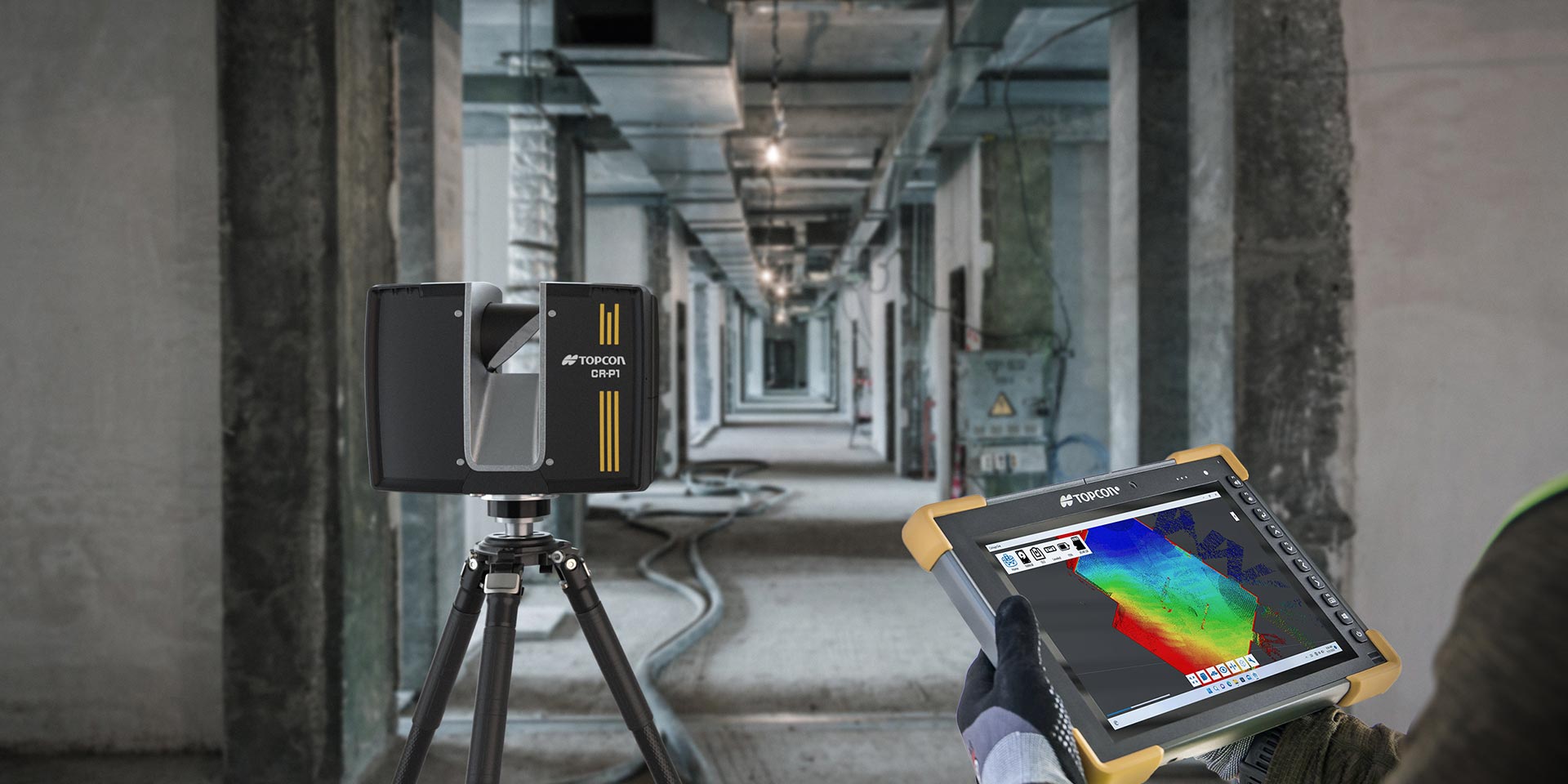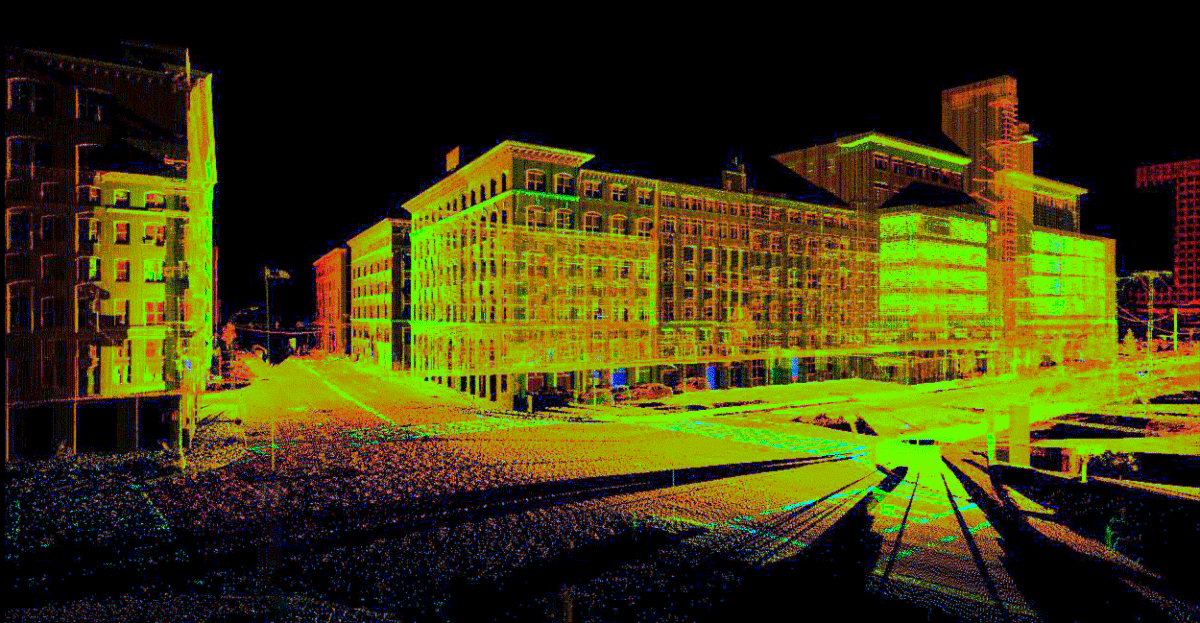Exploring the Applications of 3D Laser Scanning in Archaeology and Cultural Heritage Preservation
The integration of 3D laser scanning innovation in archaeology and social heritage conservation marks a significant advancement in just how historical sites and artifacts are recorded and evaluated. This non-invasive technique offers specific spatial information, revealing complex details that were formerly difficult to catch. As the applications of this technology remain to progress, various implications for education, paperwork, and preservation emerge, inviting additional exploration into its transformative effect on the field.
Comprehending 3D Laser Scanning Technology
3D laser scanning technology has actually reinvented the field of archaeology by offering detailed and precise spatial data. This advanced innovation utilizes laser beam of lights to record countless data factors from an item or website, creating a highly accurate three-dimensional depiction (3D Scanning). The resulting factor clouds can disclose detailed information of historical sites, structures, and artifacts that could be undetectable to the naked eye
Utilizing this innovation, archaeologists can record the specific dimensions, forms, and positions of things with unmatched precision. This method minimizes the threat of human mistake and gets rid of the requirement for extensive hands-on dimensions. The data collected can be analyzed and shared conveniently, promoting collaboration amongst researchers. By integrating 3D laser scanning with GIS and other digital devices, archaeologists boost their ability to picture and translate historic contexts, leading to much deeper insights right into ancient cultures and atmospheres.
Enhancing Archaeological Documents
3D laser scanning substantially boosts historical documentation with its ability to develop accurate site maps. This modern technology helps with detailed artifact evaluation, giving insights that typical methods may ignore. On top of that, it assures the preservation of contextual information, which is vital for comprehending the partnerships within historical websites.
Accurate Site Mapping
While conventional mapping techniques usually deal with capturing the detailed details of historical sites, advanced laser scanning innovation offers a revolutionary strategy to exact website mapping. This technique makes it possible for excavators to create extremely detailed and accurate three-dimensional representations of websites, showcasing topographical variations and structural features with amazing fidelity. The ability to record millions of information points in an issue of mins enables comprehensive documentation, which can be easily updated and shared among researchers. Additionally, laser scanning helps with the dimension of complex geometries that would be hard to assess using traditional devices. As an outcome, this innovation boosts the accuracy of website maps, contributing considerably to the conservation and understanding of cultural heritage sources.
In-depth Artefact Analysis
Laser scanning technology greatly boosts the evaluation of historical artifacts, giving researchers with unprecedented information and precision. This method captures complex surface textures, measurements, and features that typical documents methods might forget. By generating high-resolution 3D designs, scholars can closely take a look at artefacts without the risk of damage fundamental in physical handling. This precision permits for better relative studies, allowing professionals to identify manufacturing techniques, stylistic variations, and potential social significance. The capacity to adjust and imagine information in 3 dimensions helps with a much deeper understanding of artefact functionality and usage. On the whole, laser scanning fosters a much more comprehensive approach to archaeological documents, making sure that necessary information regarding artifacts is protected for future study and education.
Preservation of Contextual Information
Protecting contextual information is vital for enhancing archaeological documentation, as it guarantees that findings are recognized within their original ecological and social structures. 3D laser scanning modern technology greatly adds to this preservation effort by capturing detailed spatial partnerships amongst artifacts, frameworks, and their environments. By producing accurate 3D versions, excavators can record the exact places and orientations of objects in situ, facilitating an extensive understanding of their context. This technology makes it possible for scientists to take another look at and evaluate sites long after excavation, keeping the stability of contextual info. On top of that, electronic documents created with scanning can be shared globally, cultivating joint study and public involvement. Eventually, protecting contextual information through 3D laser scanning improves historical narratives and promotes a more profound admiration of cultural heritage.
Conservation of Cultural Heritage Sites
As innovations in modern technology proceed to advance, the conservation of social heritage websites has ended up being significantly reliant on innovative methods such as 3D laser scanning. This modern technology permits the detailed paperwork of landscapes, structures, and artefacts, catching their specific dimensions and spatial partnerships in a non-invasive way. By creating high-resolution 3D designs, scientists can evaluate and keep an eye on wear and tear patterns, allowing positive conservation methods.
Furthermore, 3D laser scanning assists in the sharing of comprehensive website data with the global neighborhood, promoting partnership among excavators, preservationists, and chroniclers. These designs work as important resources for education and learning and public engagement, elevating understanding of cultural heritage issues. The digital records produced can protect against loss due to ecological elements, vandalism, or overlook. In general, 3D laser scanning represents a transformative method to the conservation of cultural heritage, guaranteeing that these sites can be researched and valued by future generations.

Remediation and Repair Efforts
The thorough documentation attained through 3D laser scanning plays a substantial function in remediation and restoration efforts within archaeology. This modern technology supplies precise dimensions and high-resolution imagery, permitting for accurate electronic models of artifacts and frameworks. These versions act as essential references browse around here during remediation processes, making it possible for excavators to make and envision the initial style notified choices regarding strategies and products required for repair service.
Additionally, 3D laser scanning facilitates the repair of damaged or lost aspects by developing in-depth reproductions. This process help in making sure that restorations preserve historic stability while likewise permitting innovative techniques to recover sites. The capability to examine wear patterns and structural weak points through scanned information boosts understanding of a website's historic context and its usage in time. Subsequently, 3D laser scanning not just preserves the physical aspects of cultural heritage yet likewise enhances the story of background, guiding future repair ventures.
Educational and Study Opportunities
The assimilation of 3D laser scanning in archaeology opens up substantial instructional and over here research study chances. Academic cooperations can improve the understanding of old sites, while specialized training workshops gear up professionals with crucial skills for utilizing this innovation. With each other, these campaigns promote a richer involvement with archaeological practices and methods.
Academic Collaborations in Archaeology
Collaborative efforts in archaeology have come to be progressively vital for progressing both instructional and research chances. By fostering partnerships among colleges, study institutions, and cultural heritage companies, these cooperations promote the exchange of knowledge and resources, boosting the quality of archaeological studies. Joint jobs often utilize varied expertise, permitting innovative methodologies and extensive evaluations, particularly in the application of modern technologies like 3D laser scanning. Such partnerships additionally advertise interdisciplinary approaches, involving areas such as history, geography, and preservation scientific research. Furthermore, academic partnerships usually result in the growth of brand-new curricula and training programs, preparing the next generation of archaeologists to efficiently use sophisticated modern technologies in their job. Inevitably, these alliances add to the preservation and understanding of cultural heritage.
Training Workshops for Experts
Training workshops for specialists in archaeology are increasingly essential for improving skills in the application of innovative technologies such as 3D laser scanning. These workshops give individuals with hands-on experience in utilizing advanced devices and software, fostering a much deeper understanding of information capture and evaluation processes. Professionals can discover to produce accurate electronic models of historical websites, which substantially help in documentation and preservation initiatives. Additionally, these training sessions often include discussions on best practices and study, promoting expertise exchange among participants. By spending in continuous education and learning, experts can stay upgraded on progressing technologies, ultimately boosting the performance of their research and cultural heritage conservation initiatives. This dedication to skill enhancement is crucial for advancing the field of archaeology.
Future Trends in 3D Laser Scanning for Archaeology
As innovations in modern technology remain to reshape numerous fields, the future of 3D laser scanning in archaeology guarantees to improve both the precision and performance of site documentation and analysis. Arising fads suggest an expanding integration of expert system and machine understanding, find more info helping with automated data processing and interpretation. This development will certainly enable archaeologists to assess complex datasets faster, leading to faster understandings right into historical contexts.
Additionally, the combination of drone technology with 3D laser scanning is likely to broaden, enabling thorough aerial studies of historical sites that are difficult to gain access to. The enhancing price of scanning equipment will democratize access, equipping smaller sized organizations and independent scientists to use these devices properly. Furthermore, developments in virtual reality and enhanced fact will make it possible for immersive experiences for public engagement and education, making archaeological searchings for much more obtainable and interactive. These patterns collectively indicate a transformative future for archaeology, improving preservation efforts and increasing the discipline's outreach.
Often Asked Inquiries
How Much Does 3D Laser Scanning Tools Cost?

What Are the Limitations of 3D Laser Scanning?
The limitations of 3D laser scanning include high costs, prospective information handling difficulties, level of sensitivity to environmental conditions, and problem capturing elaborate information in complex surfaces, which can impact the accuracy and efficiency of checked depictions. (3D Scanning)

Can 3D Laser Scanning Be Utilized Undersea?
Yes, 3D laser scanning can be made use of underwater, yet it needs specialized devices and techniques to conquer challenges such as water distortion and minimal visibility. Effective applications have actually been shown in marine archaeology and underwater studies.
How much time Does a Scanning Job Generally Take?
A scanning job normally takes anywhere from a few days to several weeks, relying on the complexity and dimension of the area being scanned, in addition to the preparation and post-processing demands associated with the task.
Are There Details Software Needs for Handling 3D Checks?
Yes, certain software application requirements for refining 3D scans consist of programs capable of handling large point clouds, such as Autodesk ReCap, Cyclone, or MeshLab. These tools help with analysis, visualization, and assimilation into numerous applications effectively.
The assimilation of 3D laser scanning innovation in archaeology and social heritage conservation marks a considerable improvement in exactly how historical websites and artifacts are recorded and evaluated. 3D laser scanning modern technology has revolutionized the area of archaeology by providing in-depth and exact spatial information. As improvements in innovation proceed to advance, the preservation of social heritage sites has actually ended up being significantly dependent on innovative approaches such as 3D laser scanning. As advancements in innovation continue to reshape various fields, the future of 3D laser scanning in archaeology assures to enhance both the precision and performance of site paperwork and evaluation. The integration of drone modern technology with 3D laser scanning is likely to broaden, allowing detailed airborne surveys of archaeological websites that are challenging to access.